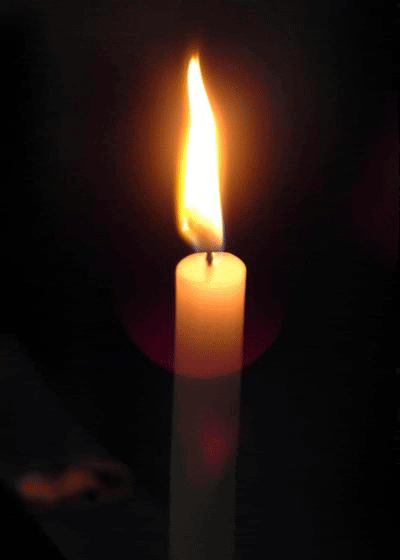தமிழில் திரிபிடக மூன்று தொகுப்புகள்
மற்றும்
பன்னிரண்டாகவுள்ள மண்டலங்கள்
சுருக்கமான வரலாற்று முன் வரலாறு
ஸுத்தபிடக
வினயபிடகே
அபிதம்மபிடக
புத்தசமய நெறி முறைகளின் பன்னிரண்டாகவுள்ள மண்டலங்கள்
புத்தசமய நெறி முறைகளின் ஒன்பது மண்டலங்கள்
TIPITAKA-ஸுத்தபிடக-Section-A
from FREE ONLINE eNālāndā Research and
Practice UNIVERSITY through http://sarvajan.ambedkar.org



TO









தமிழில் திரிபிடக மூன்று தொகுப்புகள்
மற்றும்
பன்னிரண்டாகவுள்ள மண்டலங்கள்
சுருக்கமான வரலாற்று முன் வரலாறு
ஸுத்தபிடக
வினயபிடகே
அபிதம்மபிடக
புத்தசமய நெறி முறைகளின் பன்னிரண்டாகவுள்ள மண்டலங்கள்
புத்தசமய நெறி முறைகளின் ஒன்பது மண்டலங்கள்
TIPITAKA
TIPITAKA AND TWELVE DIVISIONS
Brief historical background
Sutta Pitaka
Vinaya Pitaka
Abhidhamma Pitaka
Twelve Divisions of Buddhist Canons
Nine Divisions of Buddhist Canons
TIPITAKA AND TWELVE DIVISIONS is the collection of the teachings
of the Buddha over 45 years. It consists of Sutta (the conventional
teaching), Vinaya (Disciplinary code) and Abhidhamma (commentaries).
The Tipitaka was compiled and arranged in its present form by the
disciples who had immediate contact with Shakyamuni Buddha. The Buddha
had passed away, but the sublime Dhamma which he unreservedly bequeathed
to humanity still exists in its pristine purity. Although the Buddha
had left no written records of his teachings, his distinguished
disciples preserved them by committing to memory and transmitting them
orally from generation to generation.
சுருக்கமான வரலாற்று முன் வரலாறு
புத்தரின் இறுதி சடங்கிற்கப்புறம் உடனே, 500 மேன்மைதங்கிய கெளரவம் நிறைந்த அறஹதர்கள் (அருகதையுள்ளவர்கள்) முதலாவது பெளத்த சமயத்தினர் அவை என்றழைக்கப்பட்ட புத்தர் போதித்த போதனைகளை மறுபடிமுற்றிலும் சொல் அவை கூட்டினர். புத்தருடன் திடப்பற்றுடன் உடனிருந்த மற்றும் புத்தரின் முழுமை போதனையுரைகளையும் கேட்டுணரும் வாய்ப்புப் பெற்ற பிரத்தியேகமான சிறப்புரிமை வாய்ந்த பூஜிக்கத்தக்க ஆனந்தா, ஸுத்த (மரபொழுங்கு சார்ந்த போதனை) நெட்டுருப்பண்ணி ஒப்புவிவித்தார், அதே சமயம் பூஜிக்கத்தக்க உபாலி, வினய (ஒழுங்கு சார்ந்த விதித் தொகுப்பு) ஸங்கத்திற்கான நடத்தை விதிகளை நெட்டுருப்பண்ணி ஒப்புவிவித்தார்.முதலாவது பெளத்த சமயத்தினர் அவையின் ஒரு நூற்றாண்டுக்குப் பின், சில சீடர்கள் ஒரு சில சிறுபகுதி விதிகளின் மாற்றம் தேவை என உணர்ந்தனர். பழமையிலிருந்து நழுவாத பிக்குக்கள் மாற்றங்கள் எதுவும் தேவையில்லை எனக் கூறினர் அதே சமயம் மற்றவர்கள் சில ஒழுங்கு சார்ந்த விதிகளை (வினய) (ஒழுங்கு சார்ந்த விதித் தொகுப்பு)) சிறிது மாற்றியமைக்க வலியுருத்தினர்.முடிவில் அவருடைய அவைக்குப் பிறகு வேறான தனி வேறான புத்தமத ஞானக்கூடங்கள் உருவாக்குதல் வளரத் தொடங்கியது. மற்றும் இரண்டாவது அவையில் (வினய) (ஒழுங்கு சார்ந்த விதித் தொகுப்பு)) உரியதாயிருந்த விசயம் மட்டும் தான் விவாதம் செய்ப்பட்டது மற்றும் தம்மா பற்றிய கருத்து மாறுபாடு அறிவிக்கப் படவில்லை. மூன்றாம் நூற்றாண்டு அசோக சக்கரவர்த்தி காலத்தில் மூன்றாவது அவையில் ஸங்க சமூகத்தின் வேறான தனி வேறான நடத்தை விதிகளின் அபிப்பிராயங்கள் விவாதம் செய்ப்பட்டது. இந்த அவையில் வேறான தனி வேறான(வினய) (ஒழுங்கு சார்ந்த விதித் தொகுப்பு)) உரியதாயிருந்த விசயம் மட்டும் வரையறுக்கப்பபடவில்லை ஆனால் மேலும் தம்மா தொடர்பானதாகவும் இருந்தது. அபிதம்மபிடக இந்த அவையில் விவாதம் செய்ப்பட்டது மற்றும் சேர்த்துக் கொள்ளப்பட்டது. ஸ்ரீலங்கா (இலங்கையில்) 80ம் நூற்றாண்டு கூடிய, நான்காம் அவை என அழைக்கப்படும் இந்த அவை சமயப்பணியார்வமுடைய வேந்தர் வட்டகாமினி அபைய கீழுள்ள ஆதரவுடன் கூடியது. அது இந்த காலத்தில் தான் திரிபிடக ஸ்ரீலங்காவில் முதன்முறையாக எழுத்து வடிவில் புத்தசமயத்தவரது புணித பாளி மொழியில் ஈடுபடுதலானது.
Brief historical background
Immediately after the final passing away of the Buddha, 500
distinguished Arahats held a convention known as the First Buddhist
Council to rehearse the Doctrine taught by the Buddha. Venerable Ananda,
who was a faithful attendant of the Buddha and had the special
privilege of hearing all the discourses the Buddha ever uttered, recited
the Sutta, whilst the Venerable Upali recited the Vinaya, the rules of
conduct for the Sangha.
One hundred years after the First Buddhist
Council, some disciples saw the need to change certain minor rules. The
orthodox Bhikkus said that nothing should be changed while the others
insisted on modifying some disciplinary rules (Vinaya). Finally, the
formation of different schools of Buddhism germinated after his council.
And in the Second Council, only matters pertaining to the Vinaya were
discussed and no controversy about the Dhamma was reported.
In the 3rd
Century B.C. during the time of Emperor Asoka, the Third Council was
held to discuss the differences of opinion held by the Sangha community.
At this Council the differences were not confined to the Vinaya but
were also connected with the Dhamma. The Abhidhamma Pitaka was discussed
and included at this Council. The Council which was held in Sri Lanka
in 80 B.C. is known as the 4th Council under the patronage of the pious
King Vattagamini Abbaya. It was at this time in Sri Lanka that the
Tipitaka was first committed to writing in Pali language.